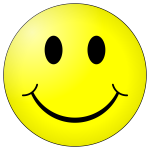Recently, a colleague of mine referred to “Harvey balls” when I knew he mean “Booz balls,” those quarter/half/three-quarter filled circles that graphically represent low to high scales. If you need to show, say in a table, a set of values, you can use these Harvey/Booz balls instead of numbers; they make it easy to scan the table. Consumer Reports uses them, for example.
They’re a consulting staple, and I call them Booz balls because, I have always assumed, they were first used at Booz, Allen, Hamilton.
But why Harvey?
Wikipedia has the answer: Harvey Poppel, a Booz consultant, invented them, so you either honor the man (Harvey balls) or his employer (Booz balls.)
There’s even a very useful Harvey balls font, from a former Booz consultant of course, which gives you a lot of flexibility to use them in, say, Excel. (For presentations, I think you’re still better off using a graphic.) You have to be aware of how to use them, though, because in the example above the balls represent one to nine; five and above are variations on one to four, not actually higher values.
Your browser may not represent these properly, but there are also Unicode values for Booz/Harvey balls:
○ ◔ ◑ ◕ ●
Now — and this is really a large piece of awesomeness — you should be careful not to confuse Harvey (Poppel’s) balls with Harvey Ball, the inventor of the smiley face.


